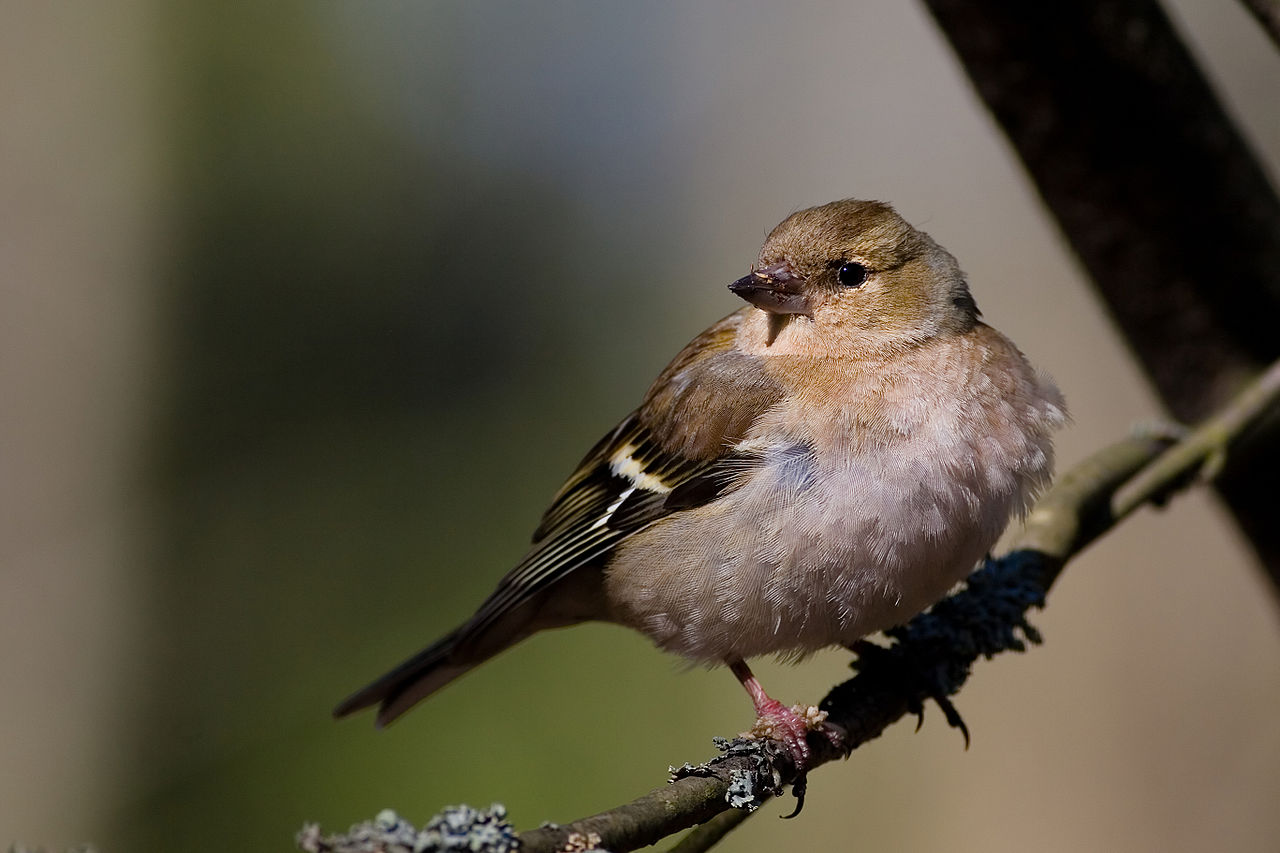Garden Wildlife
Garden Wildlife


What do they eat?
Chaffinches eat a range of foods, including seeds, grain and fruit, but also insects, worms and the like. Their main winter food is seeds, while they go for insects in the summer. They are often attracted to garden feeding stations but are not very agile on feeders and they tend to glean on the ground eating sunflower and other seeds.
What do they do?
As natives of woodland, chaffinches spend much time searching branches and larger twigs of trees for insects, but also explore the ground for food. The song is widespread in spring and summer through suburban and rural areas as well as woodlands. They form flocks in winter, mainly formed of male birds, which lead Linnaeus to give them the species name "coelebs" which means "bachelor" or "unmarried" in latin. This may be due to females migrating further west in winter, and female flocks dominate in Ireland and the west of England. They will also join other finches and tits in winter to forage collectively. The UK population tends to stay here in all year round, but it is joined by large numbers of migrants from NE Europe for the Winter.
How are they doing?
Chaffinch numers increased from 1970 to 2010, but the BTO Breeding Birds Survey 2019 reveals that populations have declined by a third in the last ten years. There are thought to be about 5.1 million terrritories in the UK. At present it is not of ‘conservation concern’ but watch this space….
Finding out more:
BTO profile on chaffinch
RSPB profile on chaffinch
Toms, Mike. (2010) Chaffinch: the bachelor bird. Bird Table 62:17 Available here.
Page written by Roy Smith, compiled by Steve Head
Chaffinch Fringilla coelebs
A colourful finch, although less flamboyant than Goldfinch! It is around the midpoint of the ‘top 20’ garden birds in the UK and recorded in nearly half of observer's gardens.
What do they sound like?
The male chaffinch has a very distinctive song, a cascade of notes with a loud trill descending at the end. There is also a distinctive clear contact call, Chaffinches are woodland birds in nature so contact calls are important in the denser vegetation.
Male chaffinch song Chaffinch call


.jpg)
What do they look like?
Chaffinches are a bit bigger (14cm) than a robin, with a broad-based bill typical of the finches. The male has a grey crown and nape, with a pink-red face, undersides and flank. The back is brown with a distinct green tinge to the rump. The colours are strong but subdued. The wings are blackish but have two wide white bars.
The females are duller brownish birds a lot like sparrows but they don’t have the streakiness and the wing bars are really obvious. Juveniles look similar to the females.
See our finches page for comparison with other species.
Arend Wassink, XC648240. Accessible at www.xeno-canto.org/648240.
Olivier SWIFT, Hélène CARTAUD, XC647060. Accessible at www.xeno-canto.org/647060.
Chaffinch Fringilla coelebs
A colourful finch, although less flamboyant than Goldfinch! It is around the midpoint of the ‘top 20’ garden birds in the UK and recorded in nearly half of observer's gardens.
.jpg)


What do they look like?
Chaffinches are a bit bigger (14cm) than a robin, with a broad-based bill typical of the finches. The male has a grey crown and nape, with a pink-red face, undersides and flank. The back is brown with a distinct green tinge to the rump. The colours are strong but subdued. The wings are blackish but have two wide white bars.
The females are duller brownish birds a lot like sparrows but they don’t have the streakiness and the wing bars are really obvious. Juveniles look similar to the females. See our finches page for comparison with other species.
Male
Female
What do they sound like?
The male chaffinch has a very distinctive song, a cascade of notes with a loud trill descending at the end. There is also a distinctive clear contact call, Chaffinches are woodland birds in nature so contact calls are important in the denser vegetation.
Male chaffinch song Chaffinch call
What do they eat?
Chaffinches eat a range of foods, including seeds, grain and fruit, but also insects, worms and the like. Their main winter food is seeds, while they go for insects in the summer. They are often attracted to garden feeding stations but are not very agile on feeders and they tend to glean on the ground eating sunflower and other seeds.
What do they do?
As natives of woodland, chaffinches spend much time searching branches and larger twigs of trees for insects, but also explore the ground for food. The song is widespread in spring and summer through suburban and rural areas as well as woodlands. They form flocks in winter, mainly formed of male birds, which lead Linnaeus to give them the species name "coelebs" which means "bachelor" or "unmarried" in latin. This may be due to females migrating further west in winter, and female flocks dominate in Ireland and the west of England. They will also join other finches and tits in winter to forage collectively. The UK population tends to stay here in all year round, but it is joined by large numbers of migrants from NE Europe for the Winter.
How are they doing?
Chaffinch numers increased from 1970 to 2010, but the BTO Breeding Birds Survey 2019 reveals that populations have declined by a third in the last ten years. There are thought to be about 5.1 million terrritories in the UK. At present it is not of ‘conservation concern’ but watch this space….
Finding out more:
BTO profile on chaffinch
RSPB profile on chaffinch
Toms, Mike. (2010) Chaffinch: the bachelor bird. Bird Table 62:17 Available here.
Page written by Roy Smith, compiled by Steve Head
























